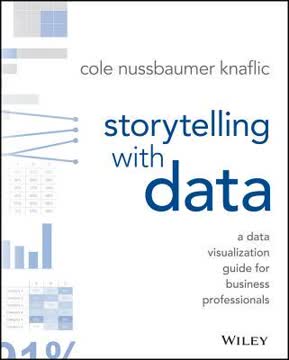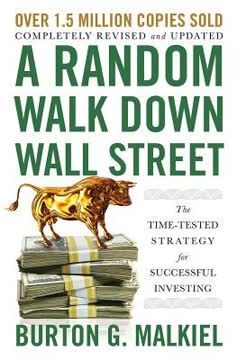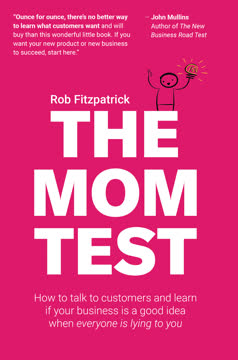重点摘要
1. 数据驱动营销是弥合营销鸿沟的关键
“仅仅因为某个活动组件效果不佳,并不意味着我们不应该做。我们需要重新评估我们的营销方式,寻找提高效果的机会。”
营销鸿沟存在。 研究表明,拥抱数据驱动营销的组织与不采用数据驱动营销的组织之间存在明显的差距。那些在营销活动中利用数据和指标的领导者,在财务表现、市场份额和品牌价值方面,始终优于落后者。
从小做起,快速扩展。 为了弥合这一鸿沟,组织应:
- 从简单的指标和Excel分析开始
- 专注于收集正确的数据(20%提供80%的价值)
- 展示快速胜利以获得高层支持
- 逐步建立更高级分析的基础设施
需要文化转变。 实施数据驱动营销通常需要克服组织阻力。关键策略包括:
- 将激励与结果对齐,而不仅仅是活动
- 提供新工具和方法的培训
- 通过领导层的一致信息传递和示范,创建“数据驱动营销文化”
2. 关键指标构成有效营销衡量的基础
“如果你能衡量营销,你就能控制它,并大幅提高绩效。”
15个关键指标。 书中识别了跨各种营销活动的15个关键指标:
- 品牌知名度
- 试驾
- 流失率
- 客户满意度(CSAT)
- 接受率
- 利润
- 净现值(NPV)
- 内部收益率(IRR)
- 回收期
- 客户终身价值(CLTV)
- 每次点击成本(CPC)
- 交易转化率(TCR)
- 广告支出回报率(ROA)
- 跳出率
- 口碑(WOM)
平衡计分卡方法。 有效的衡量需要在多个维度上保持平衡:
- 战略(前瞻性):品牌知名度、CSAT、试驾
- 战术(回顾性):财务指标、流失率
- 运营:接受率、活动效率
为衡量而设计。 要实施有效的衡量:
- 在启动活动之前定义明确的目标和关键绩效指标(KPI)
- 创建与业务目标对齐的计分卡
- 在活动生命周期内定期收集数据
3. 财务指标量化超过50%的营销活动
“财务是商业的语言,学会说这种语言的营销人员在董事会中会更受尊重。”
适用于需求生成。 财务指标特别适用于:
- 短期促销活动
- 新产品发布
- 可衡量的重复购买的忠诚度营销
关键财务指标:
- 利润:收入 - 成本
- 净现值(NPV):折现的未来现金流
- 内部收益率(IRR):投资收支平衡的利率
- 回收期:收回投资所需的时间
ROMI框架。 计算营销投资回报率:
- 定义基准情况(业务照常)
- 估算新营销举措的上升空间
- 计算增量现金流
- 进行敏感性分析以应对不确定性
4. 客户终身价值(CLTV)是基于价值的营销的关键
“所有客户并不都是平等的。”
CLTV计算。 客户终身价值代表客户未来利润潜力的净现值,考虑到:
- 获取成本
- 预期利润率
- 保留概率
- 折现率
基于价值的策略。 CLTV使更有效的:
- 客户细分
- 资源分配
- 目标营销活动
- 高价值客户的保留工作
平衡短期和长期。 有效的基于价值的营销需要:
- 识别和培养高潜力客户
- 管理低价值或负价值客户的成本
- 制定策略将中等价值客户转变为高价值客户
5. 互联网营销指标在数字时代推动绩效
“互联网营销是狂野西部:互联网是营销的新前沿,尚未完全弄清楚。”
搜索引擎营销(SEM)优化。 关键指标包括:
- 每次点击成本(CPC)
- 点击率(CTR)
- 交易转化率(TCR)
- 广告支出回报率(ROA)
超越点击。 有效的数字营销还考虑:
- 跳出率:快速离开的访客百分比
- 归因模型:了解完整的客户旅程
- 口碑(WOM):跟踪社交媒体参与和分享
新兴趋势。 保持领先:
- 社交媒体中的超精准定位
- 实时竞价和优化
- 在线和离线营销数据的整合
6. 敏捷营销使快速适应和绩效改进成为可能
“如果你要失败,那就快速失败。”
近实时数据收集。 在比活动持续时间更短的时间尺度上收集绩效数据:
- 对于10个月的活动,至少每月收集数据
- 对于10周的活动,每周收集数据
为衡量而设计。 在启动活动之前:
- 定义明确的成功标准和指标
- 计划数据收集方法
- 确立潜在的决策点以进行课程修正
根据洞察采取行动。 准备好:
- 放大活动的成功元素
- 修改表现不佳的方面
- 提前终止失败的活动以重新分配资源
7. 分析和事件驱动营销提供有针对性、及时的优惠
“哇,这个产品正是我需要的!”
三种基本方法:
- 倾向性建模:预测购买可能性
- 购物篮分析:识别产品关联性
- 决策树:基于多个变量对客户进行细分
事件驱动营销。 利用分析:
- 识别触发事件(例如,生活变化、产品使用里程碑)
- 开发相关的、及时的优惠
- 自动化对客户行为的营销响应
可衡量的影响。 实施高级分析的公司报告:
- 响应率提高(通常提高3-5倍)
- 客户满意度提高
- 高价值客户的保留率提高
8. 基础设施投资必须与数据驱动营销策略一致
“数据驱动营销技术太重要了,不能留给技术人员。”
规模考虑。 基础设施需求取决于:
- 客户基础规模
- 业务需求的复杂性
- 所需的分析速度(例如,实时与批处理)
分阶段方法。 从小做起并扩展:
- 从核心指标的Excel分析开始
- 实施集中化的营销数据库
- 逐步建立企业数据仓库(EDW)能力
- 根据需要添加高级分析和实时决策
避免常见陷阱:
- 确保高层支持并与业务目标对齐
- 及早解决数据质量问题
- 从一开始就计划可扩展性
- 平衡即时胜利与长期架构需求
9. 核心营销流程区分领导者和落后者
“营销的好与伟大之间的差别并不微妙。”
四个基本能力:
- 选择:有文件记录的活动资金和对齐过程
- 组合视图:整体方法看待活动协同效应
- 监控:一致的衡量和评估
- 适应性学习:将洞察应用于未来的活动
技术支持。 虽然技术本身不会驱动绩效,但它通过以下方式支持这些核心流程:
- 集中化数据管理
- 分析和报告工具
- 营销资源管理(MRM)系统
分阶段实施。 组织通常经历三个阶段:
- 定义:基本流程和集中跟踪
- 中级:具体目标、高级指标和数据仓库集成
- 高级:自动化工具、组合管理和敏捷执行
最后更新日期:
FAQ
What's Data-Driven Marketing about?
- Focus on Metrics: Data-Driven Marketing by Mark Jeffery emphasizes 15 essential marketing metrics crucial for improving performance and justifying marketing spending.
- Data-Driven Strategy: It provides a framework for developing a data-driven marketing strategy, helping organizations overcome common obstacles in implementing these practices.
- Real-World Examples: The book uses case studies from various companies to illustrate how effective data-driven marketing can lead to better financial performance.
Why should I read Data-Driven Marketing?
- Improve Marketing Performance: The book is designed for marketers who want to enhance their marketing effectiveness and demonstrate the value of their efforts.
- Practical Tools and Templates: It includes downloadable Excel templates for calculating key metrics, making it easier for readers to apply the concepts in their own organizations.
- Competitive Advantage: Understanding and implementing the principles in the book can provide a competitive edge in today’s data-rich marketing environment.
What are the key takeaways of Data-Driven Marketing?
- 15 Essential Metrics: The book identifies 15 key metrics that marketers should focus on, including brand awareness, customer lifetime value (CLTV), and return on marketing investment (ROMI).
- Overcoming Obstacles: It outlines five major obstacles to implementing data-driven marketing and provides strategies to overcome them, such as starting small and focusing on quick wins.
- Linking Marketing to Financial Performance: The author emphasizes the connection between effective marketing measurement and improved financial outcomes.
What are the best quotes from Data-Driven Marketing and what do they mean?
- “Half the money I spend on marketing is wasted—the problem is I don’t know which half.”: Highlights the challenge of measuring campaign effectiveness and the need for better metrics.
- “If you can measure marketing, you can control it and radically improve performance.”: Emphasizes the importance of measurement in marketing for better decision-making and outcomes.
- “The marketing divide exists between organizations that do data-driven marketing and use marketing metrics and those that do not.”: Underscores the disparity in effectiveness between companies that embrace data-driven strategies and those that do not.
What are the 15 essential marketing metrics discussed in Data-Driven Marketing?
- Brand Awareness: Measures the ability of customers to recall a product or service, crucial for driving initial consideration.
- Test-Drive: Represents the pre-purchase evaluation of a product, indicating future sales potential based on customer engagement.
- Churn: The percentage of customers who stop purchasing, vital for understanding customer loyalty and retention.
- Customer Satisfaction (CSAT): Gauges how likely customers are to recommend a product or service, serving as a leading indicator of future sales.
- Take Rate: The percentage of customers who accept a marketing offer, reflecting the effectiveness of demand generation campaigns.
How does Data-Driven Marketing suggest overcoming obstacles to implementing data-driven strategies?
- Start Small: Focus on collecting the right data and achieving quick wins to build momentum for larger initiatives.
- Conduct Experiments: Run small experiments to isolate variables and understand the impact of marketing efforts.
- Build a Data-Driven Culture: Create a culture that values measurement and accountability for long-term success in data-driven marketing.
What is the significance of Customer Lifetime Value (CLTV) in Data-Driven Marketing?
- Valuable Metric: CLTV quantifies the future profitability of a customer, helping businesses prioritize marketing efforts based on customer value.
- Retention Focus: Understanding CLTV allows companies to develop strategies to retain high-value customers and reduce churn.
- Data-Driven Decisions: Emphasizes using CLTV in marketing decisions to ensure resources are allocated effectively to maximize long-term profitability.
How does Data-Driven Marketing define Return on Marketing Investment (ROMI)?
- Financial Metrics: ROMI is calculated using essential financial metrics such as Net Present Value (NPV), Internal Rate of Return (IRR), and payback period.
- Decision-Making Tool: Provides a framework for analyzing marketing initiatives to determine their financial viability and impact on the business.
- Incremental Cash Flows: Focuses on the incremental cash flows generated by marketing campaigns, allowing marketers to justify their spending based on measurable outcomes.
What is agile marketing according to Data-Driven Marketing?
- Agile Marketing Concept: Described as a strategy that emphasizes flexibility and responsiveness to data, allowing for quick adjustments based on performance.
- Fail Fast Philosophy: Encourages quickly identifying underperforming campaigns and pivoting as needed to minimize wasted resources.
- Real-Time Adjustments: Allows for real-time adjustments to campaigns, enhancing their effectiveness through continuous monitoring of performance metrics.
What are the three essential approaches to analytic marketing in Data-Driven Marketing?
- Propensity Modeling: Predicts the likelihood of a customer purchasing a specific product based on historical data, helping tailor offers to individual customers.
- Market Basket Analysis: Identifies products frequently purchased together, allowing for effective cross-selling strategies and insights into customer purchasing behavior.
- Decision Trees: Used to segment customers based on behaviors and characteristics, helping identify high-risk customers and tailor retention strategies.
What role does technology play in Data-Driven Marketing?
- Support for MCM Processes: Technology is essential for supporting marketing campaign management processes, enabling data collection, analysis, and reporting.
- Data Warehousing: Discusses the importance of data warehousing in consolidating customer data from various sources for comprehensive analysis.
- Automation Tools: Automation tools, such as marketing resource management systems, streamline marketing processes, enhancing efficiency and allowing focus on strategy.
What is the Creative X-factor in Data-Driven Marketing?
- Integration of Creativity and Data: Refers to combining creative concepts with data-driven strategies to enhance campaign performance.
- Examples of Success: Provides examples like Blendtec's "Will It Blend?" campaign, showcasing how creative marketing can drive sales and capture audience attention.
- Impact on Performance: Acts as a multiplier for marketing effectiveness, leading to substantial increases in engagement and conversion rates.
评论
《数据驱动营销》评价褒贬不一,平均评分为3.91分(满分5分)。读者赞赏其对营销指标和数据分析的见解,认为这对理解现代营销策略非常有价值。许多人称赞其实际案例和可操作的建议。然而,一些批评者认为该书内容过时或对有经验的营销人员来说过于基础。该书因全面覆盖营销指标而受到好评,但也因偶尔显得枯燥或重复而受到批评。推荐给希望提升数据驱动决策能力的营销人员。
Similar Books














